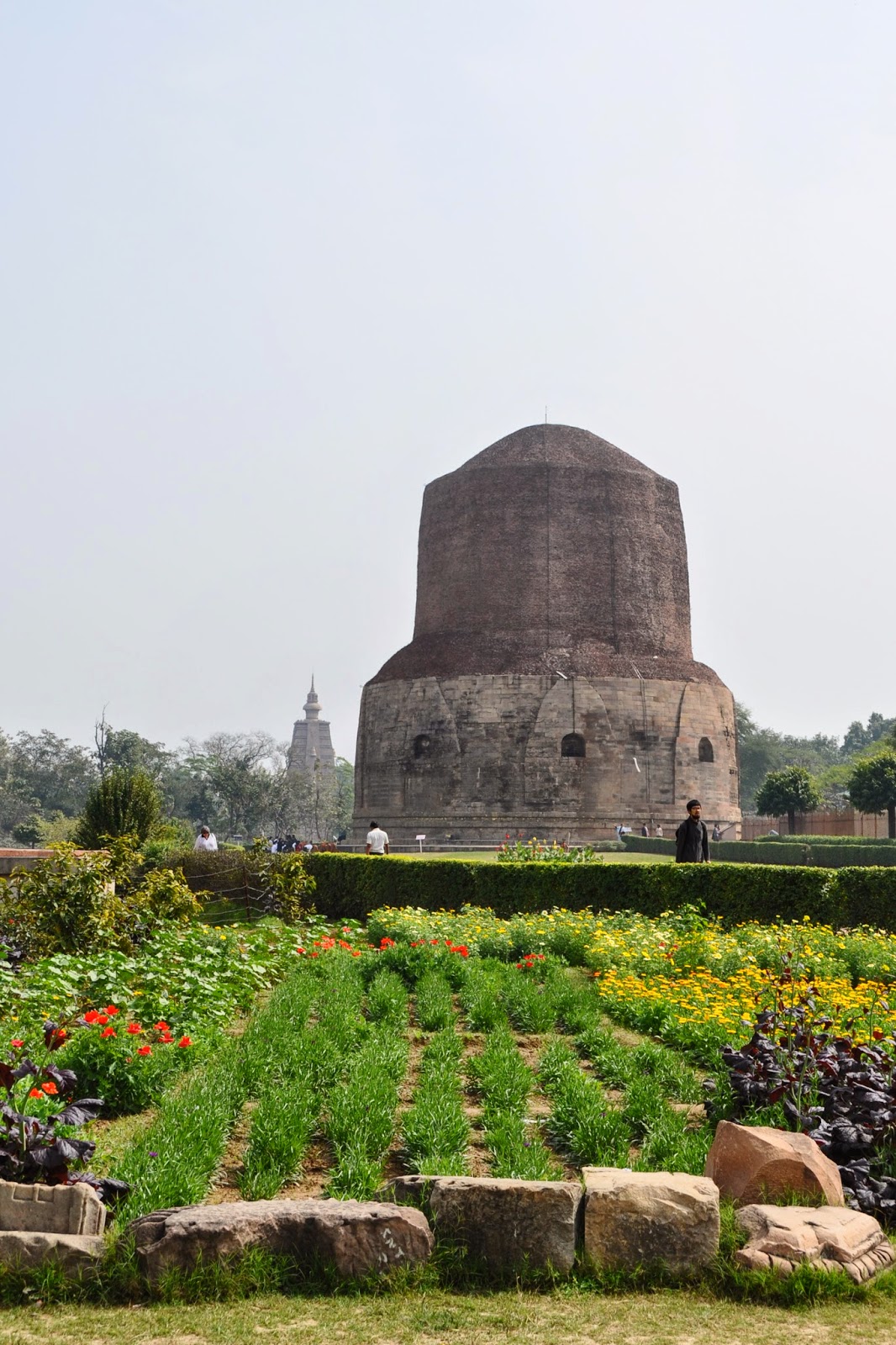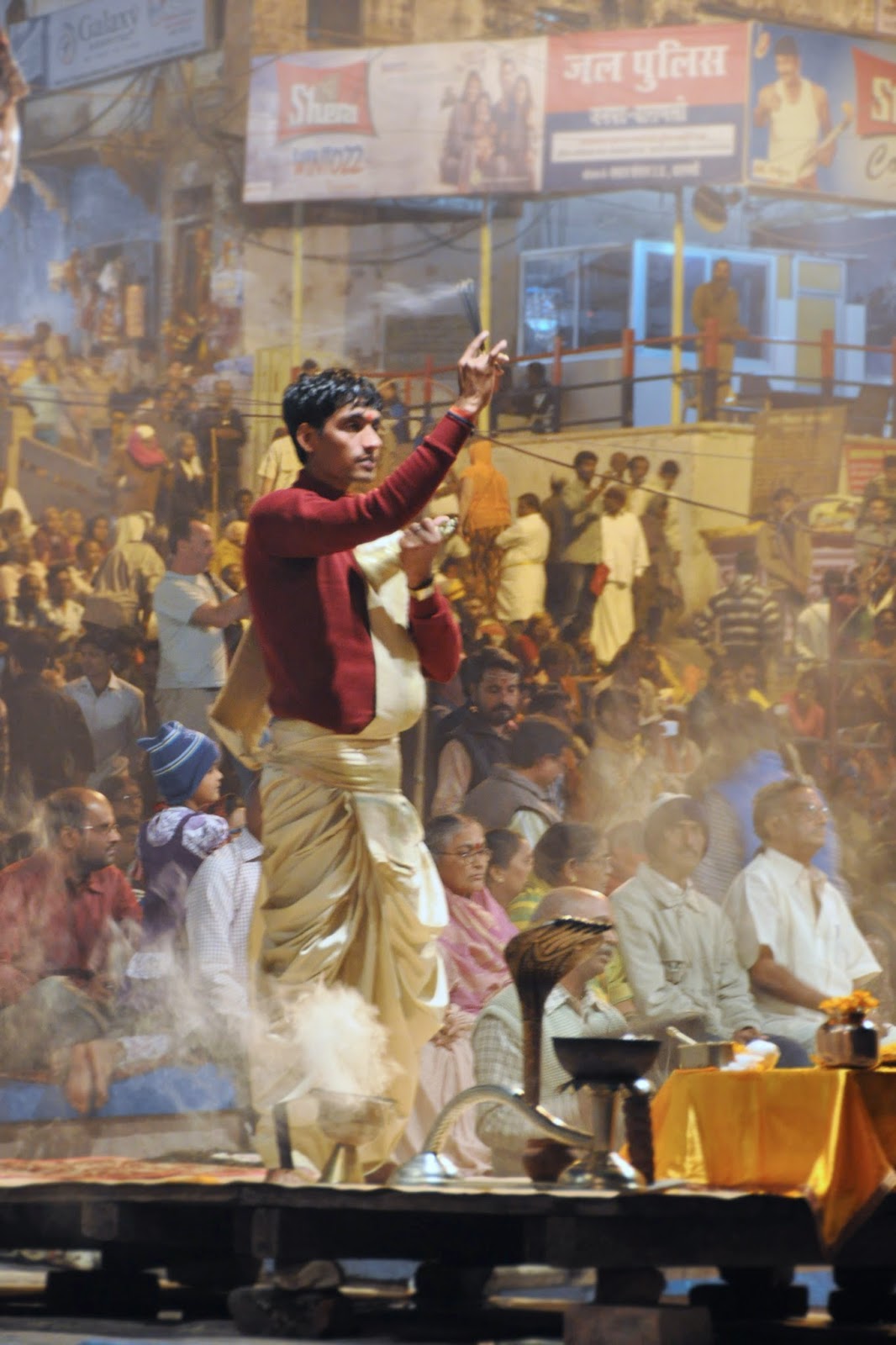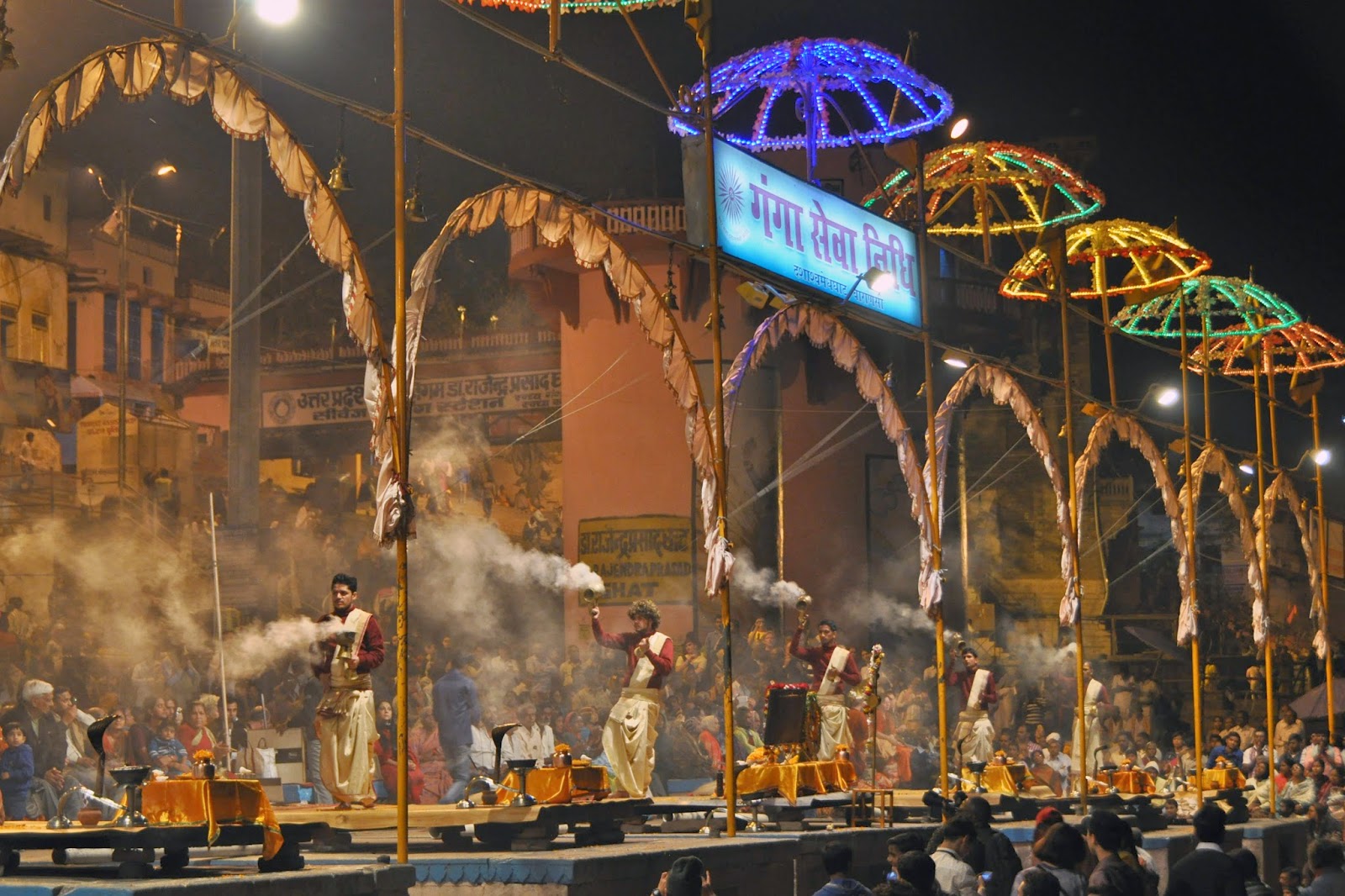As luck would have it, our RS guide, Jayanta Kar, was a native of Varanasi; he spoke of his hometown quite often, making us even more anxious to explore it. He gave us advice on what to do and see, and hooked us up with a colleague of his for a day of touring by car. On our last full day in Varanasi, he even showed up at our hotel and helped us find a certain kind of incense I had been searching for, some essential oils to help treat the head cold I was developing, and recommended a good restaurant for lunch. What a guy! Talk about above and beyond…
The day after the RS tour ended, we flew to Varanasi from Delhi, and the Hotel Alka sent a taxi to pick us up at the airport for a hair-raising drive into the old part of the city. Our driver took us as far as cars are allowed, and we were met by three porters who hoisted our bags onto their shoulders or heads, and we followed them through crowded, narrow walkways to the hotel, about a 15 minute walk. Once we got checked in, we discovered that this establishment was more like a hostel than a hotel! After staying in beautiful four and five star hotels with the tour (something we never do on our own), we were a little taken aback at first, but one look out our window, told us why this place was highly rated on TripAdvisor -- location, location, LOCATION! This is the view from our room that evening, high above the river ghats (stairs) and the Ganga (Ganges) River.
The next morning, we wandered along the river, taking in all the sights, sounds and smells of this ancient city. Except for all the hawkers trying to sell us things or offering to act as our guide, people were friendly, and for the most part, continued to go about their daily business.
Although we were able to escape most of the touts, there was one fellow who grabbed Sam's arm and started giving him a hand/arm massage. Sam had a really difficult time getting away from him! When he finally untangled himself, the guy started asking for payment for his services! Having been well-trained by Jayanta, we just walked away from him, and had he continued to pester us, we knew we could threaten to go to the tourist police.
We had lunch that day at a rooftop restaurant called The Dolphin, which was on the 5th or 6th floor of a hotel (no elevator!), with a bird's eye view of the river far below and the dry riverbed on the other side.
 |
| Washing laundry. |
 |
| Taking a bath in the river. |
 |
| Playing a friendly game of cards. |
 |
| Hanging and laying out laundry to dry. |
 |
| Getting married. |
 |
| "It feels good, sir?" |
During the monsoon season (June through September), the river can rise several meters higher than we saw it, covering much of the ghats, and sometimes flooding many of the buildings along its banks. On the side of our hotel (the pink building in the photo below), there were marks to show how high the river has gotten at times. Our room was on the second to highest floor, so I assume we would have been OK, but the ghats that we had walked along would have all been under water!
The next day, we got up very early to take a quiet boat ride up and then back down the holy river, watching the sunrise through the hazy, humid air.
We watched worshippers performing their early morning rituals, bathing in river water that we were warned not to even let splash on us, due to the high level of pollution!
We floated quietly past the Manikarnika Ghat, the main cremation area in Varanasi. Hindus believe that if one is cremated here on the River Ganges, one will achieve "moksha" -- the cycle of reincarnation will be broken and your soul will ascend straight to heaven. Hindus come from all over India to have their loved ones cremated here, and the fires burn 24 hours a day, seven days a week. Enlarge this photos and notice the huge stacks of firewood.
Next to the cremation ghat is a rather eerie sight: an old temple sinking into the river.
Later that day, our Varanasi guide, Atanu Banerje, met us at our hotel, we walked to where a car and driver was waiting for us, and we were driven out to the village of Sarnath, apparently the third most holy place for Buddhists. We visited the grounds of the Tibetan and Sri Lankan Buddhist Temples, and the area where the remains of several ancient temples, destroyed by invading Turks, can be seen.
 |
| Sri Lankan Temple |
Among the ruins, there is a huge structure called the Dhamekha Stupa. A stupa is a mound-like edifice containing Buddhist relics, and is used as a place of meditation by Buddhists. This particular stupa was built about 500 CE to replace one built by King Ashoka in 248 BCE. It is 143 feet high, and it is said it marks the spot of a deer park where Buddha gave his first sermon to his disciples.
On the way back to Varanasi, our guide also took us to see a silk brocade weaving manufacturer. Varanasi is known for its fine silk products, and we got to see a demonstration of the old looms, which use a system of knots to form the patterns, and newer looms that use a punched card system. Either way, they use silk threads so fine they look no thicker than a hair, and it is a lot of work. Although Sam hates my shopping, I managed to purchase a beautiful scarf for myself (in jewel tones of purple, blue, and green), but it is so delicate, I am almost afraid to wear it!
Probably the biggest highlight of a visit to Varanasi is seeing the nightly Ganga Aarti, a Hindu ceremony performed by seven priests at the Dashashwamedh Ghat, Varanasi's main ghat. Hundreds of pilgrims and tourists arrive early to secure good seats, whether on the ghat behind the priests, or in boats on the river. We walked down ahead of time, and for a few rupees, found good seats at one end, on a platform that extended over the river. We watched as pilgrims lighted small wicks soaked in ghee (clarified butter) decorated with yellow and orange flowers, which they then set to float on the river as an offering to Mother Ganga, the holy mother river.
When the ceremony began, there was lots of fire and incense smoke, loud bell-ringing and chanting. It was quite moving, and an experience I will never forget, especially the sight of dozens of tiny lights floating on the dark river afterwards.
On the last of the four nights we were in Varanasi, we discovered a music festival called Dhrupad Mela (dhrupad is a vocal type of Hindu classical music) was happening at the Tulsi Ghat, quite a distance from our hotel. We hired a boatman to take us up the river to see a performance. Unfortunately, rowing upstream was a challenge for our guy, and took longer than we had hoped, so we didn't get to see much of the show. What we did see, however, was very interesting.
It turned out our final day was also the huge Hindu festival called Maha Shivrati, in honor of the Hindu god Lord Shiva.The city was much more crowded than usual because there were pilgrims from all over India and Nepal there to celebrate and worship. When our boatman took us back to our hotel after the music festival - a much faster trip as it was downstream this time - we glided, almost silently through the water of the mother river, and we were treated to another amazing sight: hundreds of young men and boys, all barefoot, walking from temple to temple along the ghats singing and chanting in joyous celebration! I cannot imagine a more perfect way to end a visit to India's holiest city.
(Click on photos to enlarge. To see more of my photos from Varanasi, go to my Flickr page.)























It seems you had a great time in Varanasi,the clicks are great :)
ReplyDelete